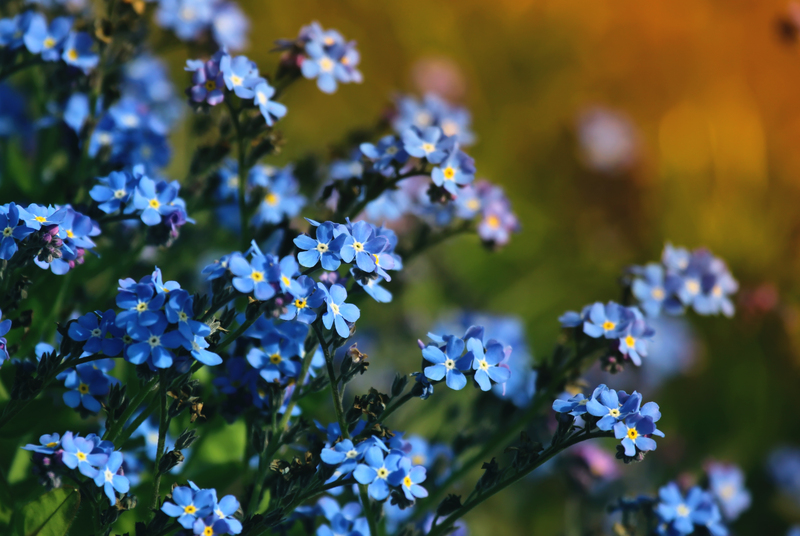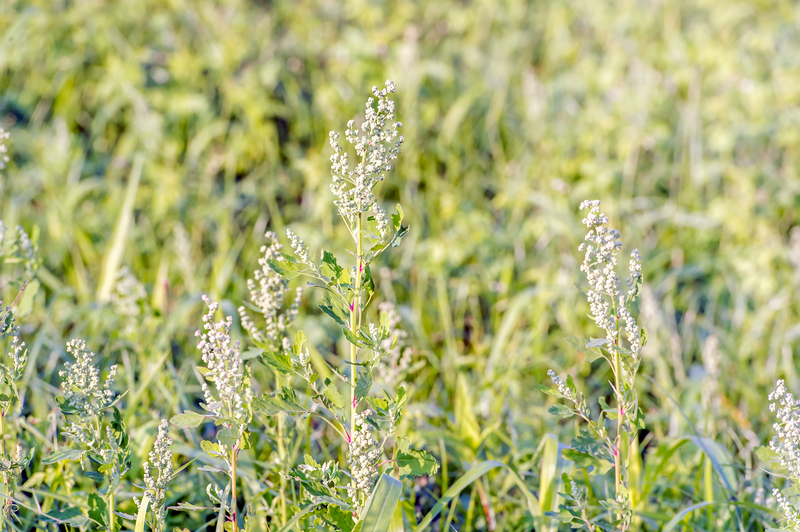Bring Tranquility to Your Outdoor Spaces with the Right Privacy Plants
Unlocking the full potential of your backyard, patio, or garden sanctuary begins with a simple step: choosing the right privacy plants. These green barriers not only create a sense of seclusion but also infuse your environment with peace, beauty, and natural charm. In this comprehensive guide, we'll explore a variety of privacy plant options, their benefits, and practical tips to help you design the tranquil outdoor haven you've always dreamed of.
Why Privacy Plants Matter in Your Outdoor Spaces
Living in urban areas or dense neighborhoods often limits privacy in our own yards. Traditionally, fences and walls may solve visibility issues but can be stark and uninviting. Privacy plants, on the other hand, offer a natural and aesthetically pleasing solution. A well-designed green screen can:
- Block unwanted views from neighbors or streets
- Reduce noise pollution for a quieter ambience
- Add year-round interest with varying textures and colors
- Create wildlife habitats for birds and pollinators
- Enhance air quality and cool the surrounding space
- Act as a windbreak for increased comfort outdoors

Top Privacy Plant Choices for Tranquil Outdoor Retreats
The best privacy landscaping plants combine density, adaptability, and beauty. From tall shrubs to fast-growing evergreens, your choice will depend on climate, sunlight, space, and your specific goals. Below, we'll review leading contenders in each category, helping you create a living privacy wall tailored to your personal taste.
Fast-Growing Evergreens for Ultimate Seclusion
If you're eager to achieve privacy quickly, fast-growing evergreens are unmatched in their ability to form a lush, living wall. Consider these popular options:
- Thuja Green Giant: An extremely fast-growing privacy plant capable of reaching 3 feet per year, the Thuja Green Giant offers dense green foliage, is easy to care for, and performs well in a variety of soils.
- Leyland Cypress: Known for its rapid growth and thick, feathery foliage, Leyland Cypress trees form an effective privacy hedge and maintain their color all year round.
- Eastern Arborvitae: A favorite for narrow spaces, this evergreen has soft, bright-green leaves and forms tall, columnar screens.
- Italian Cypress: With its slim, upright profile, Italian Cypress delivers a Mediterranean flair--ideal when you want vertical elegance without sacrificing space.
Broadleaf Evergreens for Beauty and Shelter
For a screening solution that remains lush even through winter, broadleaf evergreens offer both privacy and ornamental value:
- Holly (Ilex spp.): Dense, glossy leaves and striking red berries make holly shrubs an eye-catching choice for privacy hedges. Birds also adore their berries.
- Cherry Laurel (Prunus laurocerasus): This robust shrub is prized for its large, shiny leaves and fragrant spring blossoms. Fast-growing and adaptable, it creates a formidable green wall.
- Boxwood: Classic and versatile, boxwoods can be sheared into formal hedges or allowed to grow loose for a cottage garden effect.
Flowering Shrubs That Combine Privacy with Color
If you crave more than emerald green, blending flowering shrubs into your privacy plan offers both screening and seasonal drama:
- Hydrangea: With enormous blooms from early summer through fall and large, leafy structures, hydrangeas create informal living walls while attracting pollinators.
- Rose of Sharon (Hibiscus syriacus): A prolific bloomer, this tall shrub produces eye-popping flowers throughout late summer, bringing vibrancy to your privacy landscape.
- Forsythia: Famous for announcing spring with a burst of yellow flowers, Forsythia shrubs also provide thick foliage during the summer months, forming a colorful barrier.
Climbing Vines for Vertical Privacy
Where horizontal space is limited, climbing vines trained on fences, trellises, or pergolas can deliver privacy in small gardens or patios:
- English Ivy: A classic choice for covering walls or chain-link fences, English Ivy quickly grows into a thick, evergreen tapestry.
- Clematis: Offering an exceptional variety of flower shapes and colors, clematis vines create a soft living curtain when given structural support.
- Climbing Roses: For a fragrant and romantic privacy solution, climbing roses deliver beauty, scent, and shelter in one.
How to Choose the Best Privacy Plants for Your Landscape
Selecting the ideal privacy plants involves more than just picking the fastest-growing species. Consider these factors for long-term success:
- Climate & Hardiness: Choose plants suited to your USDA Hardiness Zone to ensure healthy growth year after year.
- Sunlight Requirements: Note the lighting in your planting area (full sun, partial shade, or deep shade) and select privacy plants accordingly.
- Soil Type and Moisture: Native and adaptable species generally outperform exotics. Test your soil and match plants to its drainage and nutrient content.
- Maintenance Needs: Fast growers may require regular pruning, while slower varieties could be more manageable in the long run.
- Desired Height & Width: Plan for mature size, allowing enough space for spread without crowding your landscape.
- Evergreen vs. Deciduous: For year-round privacy, opt for evergreens. If you prefer summer screening with winter openness, consider deciduous species.
- Wildlife Appeal: Some privacy plants are magnets for birds, bees, and butterflies, enriching your garden ecosystem.
Design Tips for a Tranquil, Private Outdoor Space
Creating a serene garden retreat goes beyond simply planting a row of hedges. Here are creative strategies to maximize both privacy and tranquility:
Layering for Beauty and Function
For an attractively natural look, layer various types of privacy plants. Start with taller evergreens or trees at the rear, supplement with medium-height shrubs in front, and finish with flowering perennials or groundcovers at the base. This technique:
- Softens harsh edges
- Creates depth and interest
- Provides continuous privacy even if one layer thins out
Combining Structure with Greenery
Pair plant screens with attractive structures for enhanced privacy. Think trellises, pergolas, or latticework, all adorned with climbing vines. Not only do these features boost seclusion, but they also add architectural elegance to your landscape.
Curves and Corners for Cozy Hideaways
Avoid rigid, straight lines to mimic nature's gentle flow. Use curved hedges, crescent-shaped planting beds, or corner groupings of trees and shrubs to define intimate spaces--perfect for meditation, reading, or alfresco dining in peace.
Sound-Buffering Plantings
If noise from roads or neighbors disturbs your peace, opt for dense, multi-layered plantings. Broadleaf evergreens, tall grasses, and bamboo are particularly effective at absorbing sound, helping you cultivate a more tranquil outdoor retreat.
Low-Maintenance Privacy Plants for Effortless Serenity
Longing for a relaxing, private oasis without all the work? Several easy-care privacy plants thrive with minimal fuss:
- Clumping Bamboo: This non-invasive bamboo variety grows quickly and forms dense screens but does not spread aggressively.
- Wax Myrtle: Adaptable to a range of soils and drought-tolerant, wax myrtle is evergreen and aromatic.
- Privet (Ligustrum): Known for its fast growth and reliable foliage, privet is ideal for hedges that need little ongoing attention.
Privacy Plants for Special Situations
Small Spaces & Container Gardening
On balconies, patios, or urban gardens, you can create privacy with the right plants in pots or raised beds:
- Bamboo in Containers: Choose clumping bamboo for pots to build a green screen without risk of invasive growth.
- Dwarf Conifers: These slow growers fit neatly into containers while still providing year-round foliage.
- Tall Ornamental Grasses: Varieties like Miscanthus or Pampas Grass create airy screens that sway gracefully in the breeze.
Shade-Loving Privacy Plants
If your garden sits in partial or full shade, try these effective screeners:
- Japanese Yew (Taxus cuspidata): Thrives in low light and is tolerant of pruning for neat hedges.
- North Privet: Quick-growing and tolerant of shade, it works well as a screening plant in areas with less direct sunlight.
- Mahonia (Oregon Grape): Offers distinctive holly-like leaves, fragrant yellow flowers, and metallic-blue berries for visual appeal.
Planting and Caring for Your Privacy Hedge
To enjoy vibrant, healthy privacy screens for years to come, follow these best practices when installing your living green fence:
- Prepare the Soil: Mix in compost or organic matter to give new plants a strong start.
- Proper Spacing: Research the mature width of your chosen species and space accordingly to prevent overcrowding.
- Mulching: Mulch the base to preserve moisture, suppress weeds, and keep root zones cool.
- Water Wisely: Water deeply and consistently, especially during the first two years after planting.
- Prune Regularly: Encourage dense growth and shape your hedge for the desired effect with annual or biannual pruning.
- Fertilize as Needed: Most privacy plants require little feeding, but shrub and tree fertilizers can be applied in spring to boost growth.
The Environmental Benefits of Privacy Plantings
Going green with privacy has a positive impact beyond beauty and solitude. Plant screens:
- Improve biodiversity by providing food and shelter for local wildlife.
- Mitigate climate change by sourcing CO2 and releasing oxygen.
- Reduce runoff and prevent soil erosion on sloped properties.
- Minimize heat islands by shading paved areas and cool surroundings.
By investing in living privacy walls, you assist the planet while enjoying your personal retreat.

Common Questions About Privacy Plants
How fast will my privacy plants grow?
Growth rates vary. Fast growers like Thuja Green Giant and Leyland Cypress can add up to 3 feet per year. Slower types, such as boxwood, may put on just 6-12 inches annually but require less frequent pruning.
What's the best time to plant privacy hedges?
Early spring or fall is best. Cooler temperatures and natural rainfall help roots establish without stress from summer heat.
Can I combine different types of privacy plants?
Absolutely! Mixing evergreens with flowering shrubs or ornamental grasses delivers a rich tapestry of color and texture, supporting resilience and beauty all year long.
Final Thoughts: Cultivate Privacy – Cultivate Peace
Whether your goal is to create a serene escape from city noise, a visual barrier from nearby homes, or simply a more beautiful and restful outdoor room, the right privacy plants can transform your landscape. By thoughtfully selecting and combining your privacy greenery, you'll enjoy not just increased seclusion, but also enhanced biodiversity, environmental benefits, and year-round beauty.
Begin your journey toward a more tranquil outdoor space by evaluating your landscape, understanding your needs, and choosing the privacy plants that speak to your style. With patience and care, your garden will reward you with the shelter, solitude, and soul-soothing green you deserve.